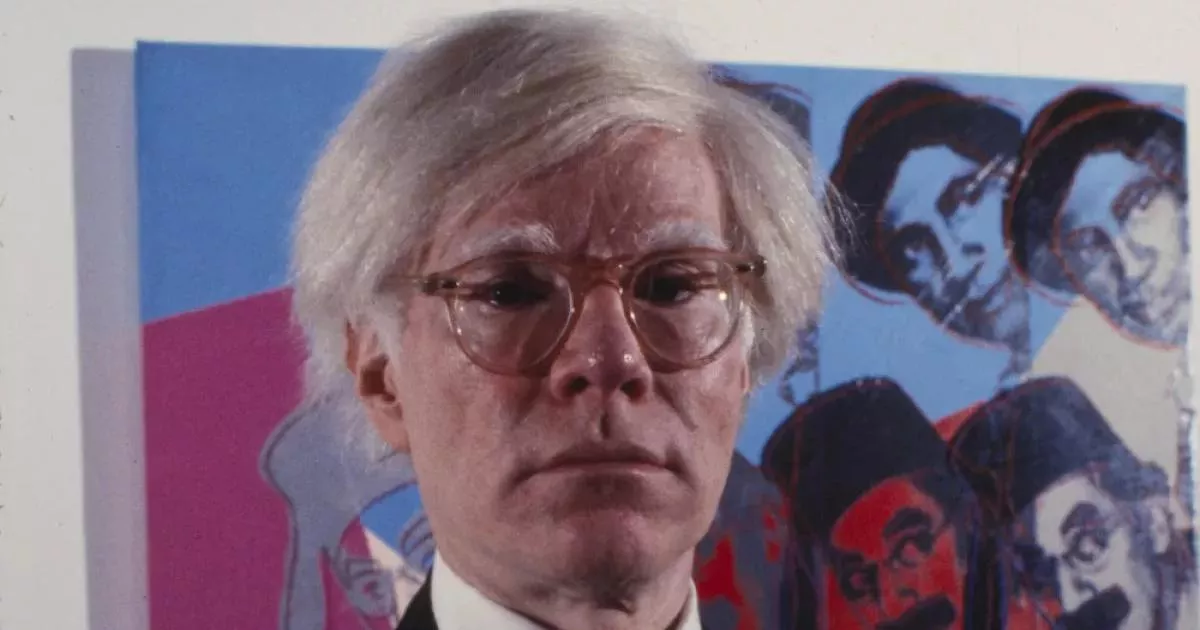Andy Warhol (1928-1987) was a pivotal American artist, film director, and producer, renowned as a leading figure in the Pop Art movement. His work examined the intersection of art, advertising, and celebrity, utilizing diverse media like painting, sculpture, photography, and film. Notable creations include 'Campbell's Soup Cans' and 'Marilyn Diptych,' alongside experimental films like 'Chelsea Girls.' Warhol's multimedia events, such as the Exploding Plastic Inevitable, and his involvement in the erotic film 'Blue Movie' highlight his influential role in shaping artistic and cultural landscapes of the 20th century.
April 1961: First Pop Art Displayed
In April 1961, Andy Warhol's first pop art paintings were displayed as the backdrop for New York Department Store Bonwit Teller's window display.
November 23, 1961: Payment for Soup Can Idea
On November 23, 1961, Andy Warhol wrote Muriel Latow a check for $50 for coming up with the idea of the soup cans as subject matter for his art.
1962: Campbell's Soup Can Painting
Andy Warhol's painting Campbell's Soup Can With Peeling Label was completed in 1962.
1962: Marilyn Series Creation
In 1962, Andy Warhol created his famous Marilyn series, including the Flavor Marilyns, which were named after various candy Life Savers flavors.
1962: Varied Subject Matter and Techniques
In 1962, Andy Warhol produced both comic and serious works, using techniques like silkscreens and bright colors to depict celebrities, everyday objects, and images of suicide, car crashes, and disasters.
1962: Lemon Marilyn Painting
Lemon Marilyn was painted in 1962 by Andy Warhol. In May 2007, it sold for $28 million.
1962: Men in Her Life and Coca-Cola (4) Created
Men in Her Life, based on Elizabeth Taylor and Coca-Cola (4) were created by Andy Warhol in 1962.
1963: Eight Elvises Creation
Eight Elvises was created in 1963 by Andy Warhol. The work depicts Elvis Presley in a gunslinger pose.
1963: First Self-Portrait Painted
From 1963 to 1964, Andy Warhol painted his first self-portrait, which sold for $38.4 million in May 2011.
1963: Green Car Crash Painting
Green Car Crash was painted in 1963 by Andy Warhol. In May 2007, it sold for $71.1 million.
1963: Liz (Colored Liz) Painting
In 1963, Andy Warhol painted Liz (Colored Liz), a painting of Elizabeth Taylor. This painting was sold in 2007 for $23.7 million.
1964: First Self-Portrait Painted
From 1963 to 1964, Andy Warhol painted his first self-portrait, which sold for $38.4 million in May 2011.
1964: Large Campbell's Soup Can Sale
In 2007, Large Campbell's Soup Can (1964) was sold at a Sotheby's auction to a South American collector for $7.4 million.
1964: Orange Marilyn Creation
Orange Marilyn was created in 1964 by Andy Warhol. It depicts Marilyn Monroe.
1966: Chelsea Girls Film
In 1966, Andy Warhol created the film Chelsea Girls.
1967: Marilyn Monroe Unauthorized Reproduction
In 1967, the most famous unauthorized reproductions of Andy Warhol work are the Marilyn Monroe portfolio screenprints from "Sunday B Morning."
February 1968: First Solo Museum Exhibition
In February 1968, Andy Warhol's first solo museum exhibition was held at the Moderna Museet in Stockholm.
June 3, 1968: Shooting at The Factory
On June 3, 1968, Valerie Solanas, a radical feminist writer, shot Andy Warhol and Mario Amaya at The Factory. Warhol was seriously wounded and hospitalized for nearly two months. Solanas was later diagnosed with paranoid schizophrenia and sentenced to three years in prison.
August 1968: Court Appearance
In August 1968, Andy Warhol appeared in court after being sued for $80,000 by Phillip "Fufu" Van Scoy Smith, an investor in a canceled film adaptation of Jane Eyre.
September 1968: Party for Midnight Cowboy
In September 1968, Andy Warhol and Ultra Violet attended a party celebrating the completion of the film Midnight Cowboy, which included a party scene filmed during Warhol's hospitalization.
November 10, 1968: Appearance in The New York Times Magazine
On November 10, 1968, Andy Warhol, Viva, and Ultra Violet appeared on the cover of The New York Times Magazine.
1968: 1968 assassination attempt
In 1968, Andy Warhol was the victim of an assassination attempt.
October 1969: Opening of Raid the Icebox
In October 1969, Andy Warhol's curated exhibition Raid the Icebox opened at Rice University's Institute for the Arts in Houston.
1969: Founding of Interview Magazine
In 1969, Andy Warhol and John Wilcock founded Interview magazine, initially titled inter/VIEW: A Monthly Film Journal.
1969: Photography and Movie Deal Discussions
In 1969, Andy Warhol traveled to Los Angeles to discuss a movie deal with Columbia Pictures. He also used a Polaroid camera to document his recovery, and some of his photographs were published in Esquire magazine.
1969: Braniff International Commercials
In 1969, Andy Warhol was commissioned by Braniff International to appear in two television commercials to promote the airline's "When You Got It – Flaunt It" campaign, created by Lois Holland Calloway. One commercial paired Warhol with Sonny Liston, and another featured Warhol being greeted by a Braniff hostess.
1969: Andy's Chest
In 1969, Lou Reed wrote the song "Andy's Chest" in response to the attempted assassination of Warhol. The song was originally recorded by the Velvet Underground.
1970: Traveling of Raid the Icebox
In 1970, Andy Warhol's curated exhibition Raid the Icebox traveled to the Isaac Delgado Museum in New Orleans.
1970: Auction Record for Living American Artist
In 1970, Andy Warhol's painting Campbell's Soup Can With Peeling Label (1962) sold for $60,000 at auction, setting a new high price for a work by a living American artist.
1970: Sunday B Morning Screenprints
In 1970, screens and film matrixes used to produce original Warhol works in the 1960s were taken to Europe for the production of Warhol screenprints under the name "Sunday B Morning." Unauthorized versions were later produced.
1970: Retrospective at Pasadena Art Museum
In 1970, the Pasadena Art Museum organized a major retrospective of Andy Warhol's work, which then traveled in the United States and abroad.
May 1971: Premiere of Andy Warhol's Pork
In May 1971, Andy Warhol's theater production, Andy Warhol's Pork, opened at the La MaMa Experimental Theatre in New York.
August 1971: Andy Warhol's Pork in London
In August 1971, Andy Warhol's production Andy Warhol's Pork was brought to the Roundhouse in London.
1971: Sticky Fingers Album Cover
In 1971, Andy Warhol created the cover concept and photography for The Rolling Stones' album Sticky Fingers.
1971: Hunky Dory album
In 1971, David Bowie recorded a song called "Andy Warhol" for his album Hunky Dory.
1971: Retrospective Exhibition in London and New York
In 1971, a major retrospective of Andy Warhol's work was mounted at the Tate Gallery in London and the Whitney Museum of American Art in New York. The Whitney show featured Warhol's Cow Wallpaper (1966) as the backdrop for his paintings.
1971: Purchase of Eothen Estate
In late 1971, Andy Warhol and Paul Morrissey purchased Eothen, an oceanfront estate in Montauk, New York on Long Island.
October 1972: Inaugural show at the Art Museum of South Texas
In October 1972, Andy Warhol's work was included in the inaugural show at the Art Museum of South Texas in Corpus Christi, Texas.
November 1972: Death of Julia Warhola and Acquisition of Archie
In November 1972, Andy Warhol's mother, Julia Warhola, passed away. Also in November 1972, Warhol and Jed Johnson got a dachshund named Archie Warhol.
1972: Renting Eothen Estate
In 1972, Andy Warhol and Paul Morrissey began renting out the main house on their Eothen estate to notable guests.
1972: Grammy Nomination and Political Involvement
In 1972, Andy Warhol received a Grammy nomination for Best Album Cover for Sticky Fingers. He also participated in an exhibition with the poster Vote McGovern to raise funds for George McGovern's presidential campaign.
1973: Mao Portraits
Between 1972 and 1973, Andy Warhol created a series of portraits of Chinese Communist leader Mao Zedong.
February 1974: Installation of Mao portraits at Musée Galliera
In February 1974, some of Andy Warhol's Mao Zedong portraits were installed at the Musée Galliera in Paris.
1974: Move to East 66th Street
In 1974, Andy Warhol and Jed Johnson moved to a townhouse at 57 East 66th Street in Manhattan's Lenox Hill neighborhood. Warhol's public presence increased due to his party attendance.
January 1975: Opening of Man on the Moon
In January 1975, the Andy Warhol-produced Broadway musical Man on the Moon by John Philips opened at the Little Theatre in New York.
May 1975: Attendance at White House State Dinner
In May 1975, Andy Warhol attended President Gerald Ford's state dinner in honor of the Shah of Iran, Mohammad Reza Pahlavi, at the White House.
1976: Portraits of Warhol and Jamie Wyeth
In 1976, Andy Warhol and Jamie Wyeth were commissioned to paint each other's portraits by the Coe Kerr Gallery in Manhattan.
January 1977: Exhibition Opening in Kuwait
In January 1977, Andy Warhol traveled to Kuwait for the opening of his exhibition at the Dhaiat Abdulla Al Salem Gallery.
June 1977: Reception Honoring Inaugural Artists
In June 1977, Andy Warhol was invited to a special reception honoring the "Inaugural Artists" who had contributed prints to the Jimmy Carter presidential campaign.
December 1977: Oxidations Series Begins
In December 1977, Andy Warhol began the Oxidations series, initially using his own urine to prime canvases with copper-based paint, later employing others for this purpose.
1977: Studio 54 and Torso Series
In 1977, Andy Warhol socialized at Studio 54 and began taking nude photographs of men for the Torsos and Sex Parts series, which caused tension with Jed Johnson.
1978: Initial BMW Art Car Commission
In 1978, Andy Warhol was initially asked to paint a BMW 320i for the BMW Art Car project, but the car model was changed and it didn't qualify for the race that year.
November 1979: Book Tour for Exposures
In November 1979, Andy Warhol embarked on a three-week book tour in the US for his book Exposures, which contained his photographs of famous friends and acquaintances.
November 1979: Exhibition of Portraits of the '70s
In November 1979, the Whitney Museum of American Art mounted the exhibition Andy Warhol: Portraits of the '70s, celebrating the celebrity of the decade.
1979: BMW Art Car Project
In 1979, Andy Warhol was commissioned to paint a BMW M1 Group 4 racing version for the BMW Art Car project. He painted directly onto the automobile himself, taking only 23 minutes.
1980: Exhibition Ten Portraits of Jews
In 1980, Andy Warhol's exhibition Ten Portraits of Jews of the Twentieth Century at the Jewish Museum in Manhattan was panned by critics.
1980: Founding of the New York Academy of Art
In 1980, The New York Academy of Art was founded in part by Andy Warhol with the mission to "revive traditional methods of training artists."
January 1981: Appearance on BBC's Arena
In January 1981, Andy Warhol appeared on the BBC series Arena in a scene with writers William S. Burroughs and Victor Bockris.
October 1981: Saturday Night Live segment
In October 1981, Andy Warhol filmed a segment for the sketch comedy television show Saturday Night Live.
1981: A No Man Show Robot
In 1981, Andy Warhol worked on a project with Peter Sellars and Lewis Allen to create a traveling stage show called A No Man Show, with a life-sized animatronic robot in the exact image of Warhol.
1982: Jean-Michel Basquiat Portrait
In 1982, Andy Warhol created Jean-Michel Basquiat, a portrait using silkscreen over an oxidized copper "piss painting."
April 1983: Warhol's Animals: Species at Risk
In April 1983, Andy Warhol's exhibition Warhol's Animals: Species at Risk, featuring endangered species silkscreen prints, was held at New York City's American Museum of Natural History.
1983: TDK Videotape commercial
In 1983, Andy Warhol appeared in a commercial for TDK Videotape.
1983: Collaboration with Basquiat and Clemente
In 1983, Andy Warhol began collaborating with Jean-Michel Basquiat and Francesco Clemente.
1983: Brooklyn Bridge Centennial Poster
In 1983, Andy Warhol was commissioned to create a poster for the centennial of the Brooklyn Bridge, which was his contribution to the 1983 New York Art Expo.
1984: Collaborative Works with Basquiat
Between 1984 and 1985, Andy Warhol and Jean-Michel Basquiat created a series of more than 50 large collaborative works.
1984: Sarajevo Winter Olympics Poster
In 1984, Andy Warhol teamed with other artists to contribute a Speed Skater print to the Art and Sport collection for the Sarajevo Winter Olympics, which was used for the official poster.
1984: Orange Prince Portrait
In 1984, Andy Warhol was commissioned by Vanity Fair to produce a portrait of Prince, called Orange Prince, referencing his earlier Marilyn "Flavors" series from 1962.
1984: Commission for The Last Supper Series
In 1984, Andy Warhol was commissioned to produce work based on Leonardo da Vinci's The Last Supper for an exhibition in Milan.
1984: Stranger In A Strange Land
In 1984, the band Triumph wrote a song about Andy Warhol, "Stranger In A Strange Land" off their album Thunder Seven.
September 1985: Joint exhibition and Reigning Queens series
In September 1985, Andy Warhol's joint exhibition with Basquiat, Paintings, opened at the Tony Shafrazi Gallery to negative reviews. Also that month, his silkscreen series Reigning Queens was shown at the Leo Castelli Gallery, despite Warhol's apprehension.
1985: Collaborative Works with Basquiat
Between 1984 and 1985, Andy Warhol and Jean-Michel Basquiat created a series of more than 50 large collaborative works.
1985: Diet Coke Commercial and The Love Boat appearance
In 1985, Andy Warhol appeared in a Diet Coke commercial. He also made a guest appearance on The Love Boat's 200th episode, where a character feared he would reveal her past.
1986: Purple Self-Portrait Painted
A purple self-portrait of Andy Warhol was painted in 1986. In May 2010, it was sold for $32.6 million.
January 1987: Last Exhibition Opening in Milan
In January 1987, Andy Warhol traveled to Milan for the opening of his last exhibition, Last Supper, at the Palazzo delle Stelline.
January 1987: The Last Supper Exhibition Opens
In January 1987, the Milan exhibition of Andy Warhol's Last Supper series opened at the Palazzo delle Stelline. This was the last exhibition for both Warhol and the gallerist.
February 17, 1987: Warhol Models at Fashion Show
On February 17, 1987, Andy Warhol modeled with jazz musician Miles Davis for Koshin Satoh's fashion show at the Tunnel in New York City.
February 27, 1987: Funeral Liturgy
On February 27, 1987, Andy Warhol's funeral liturgy was held at the Holy Ghost Byzantine Catholic Church in Pittsburgh. The eulogy was given by Monsignor Peter Tay, with speakers including Yoko Ono and John Richardson.
April 1, 1987: Memorial Service at St. Patrick's Cathedral
On April 1, 1987, a memorial service was held for Andy Warhol at St. Patrick's Cathedral in New York City. Over 2,000 people attended, including numerous celebrities and Warhol collaborators.
1987: Warhol's Death
Since Andy Warhol's death in 1987, the value of his work has been on an upward trajectory.
1989: The Life and Death of Andy Warhol
In 1989, the biography "The Life and Death of Andy Warhol" by Victor Bockris was published.
1990: Holy Terror: Andy Warhol Close Up
In 1990, the book "Holy Terror: Andy Warhol Close Up" by Bob Colacello, a former Interview editor, was published.
December 1991: Family Sues Hospital
In December 1991, Andy Warhol's family sued the hospital in the New York Supreme Court for inadequate care, alleging that arrhythmia was caused by improper care and water intoxication. The malpractice case was quickly settled out of court.
1998: Orange Marilyn Sale
In 1998, Orange Marilyn (1964), a depiction of Marilyn Monroe, sold for $17.3 million, setting a new record as the highest price paid for a Warhol artwork at the time.
May 2007: Turquoise Marilyn and Green Car Crash Sales
In May 2007, Stefan Edlis and Gael Neeson sold Andy Warhol's Turquoise Marilyn (1964) to Steven A. Cohen for $80 million. Also in May 2007, Green Car Crash (1963) sold for $71.1 million and Lemon Marilyn (1962) sold for $28 million at Christie's.
2007: Liz (Colored Liz) Sale
In 2007, one of Andy Warhol's 1963 paintings of Elizabeth Taylor, Liz (Colored Liz), which was owned by actor Hugh Grant, sold for $23.7 million at Christie's.
2008: Eight Elvises Sale
In 2008, Eight Elvises (1963) was sold by Annibale Berlingieri for $100 million to a private buyer.
November 2009: 200 One Dollar Bills Sale
In November 2009, 200 One Dollar Bills (1962) sold at Sotheby's for $43.8 million.
2009: Pop, The Genius of Warhol Biography
In 2009, Warhol's biography, Pop, The Genius of Warhol was published. The book details the payment to Muriel Latow of $50 for coming up with the idea of the soup cans as subject matter.
May 2010: Self-Portrait Sale
In May 2010, a purple self-portrait of Andy Warhol from 1986 that was owned by fashion designer Tom Ford sold for $32.6 million at Sotheby's.
November 2010: Men in Her Life and Coca-Cola (4) Sales
In November 2010, Andy Warhol's Men in Her Life (1962), based on Elizabeth Taylor, sold for $63.4 million and Coca-Cola (4) (1962) sold for $35.3 million.
May 2011: Self-Portrait and Liz No. 5 Sales
In May 2011, Andy Warhol's first self-portrait from 1963 to 1964 sold for $38.4 million and a red self-portrait from 1986 sold for $27.5 million. Also in May 2011, Liz No. 5 (Early Colored Liz) sold for $26.9 million.
May 2012: Double Elvis Sale
In May 2012, Double Elvis (Ferus Type) sold at auction at Sotheby's for $37 million.
2013: Sunday B Morning Prints Still Under Production
As of 2013, the unauthorized "Sunday B Morning" Marilyn Monroe prints of Andy Warhol's work were still under production.
November 2014: Triple Elvis Sale
In November 2014, Triple Elvis (Ferus Type) sold for $81.9 million at Christie's.
2014: Auction Sales
In 2014, sales of Andy Warhol's works at auction accumulated $569 million, accounting for more than a sixth of the global art market.
2019: Release of Volumes IV and V of the Catalogue Raisonné
In 2019, Volumes IV and V of The Andy Warhol Foundation's catalogue raisonné of paintings and sculptures were released, covering blocks of years of the artist's career.
2020: Warhol
In 2020, "Warhol", a biography written by art critic Blake Gopnik, was published.
2022: Immortality Cameo
In 2022, Andy Warhol (played by Jeff Grace) makes a cameo appearance in the video game Immortality.
2023: Artnet Article on Drawing Techniques
According to a 2023 Artnet article, Warhol was also an incredibly talented illustrator and draughtsman. He pioneered the blotted line technique, which synthesized graphite drawing on paper with elements of printmaking.
Mentioned in this timeline
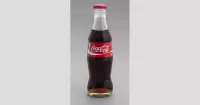
Coca-Cola is a globally recognized cola soft drink produced by...
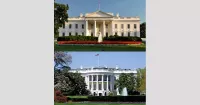
The White House located at Pennsylvania Avenue NW in Washington...
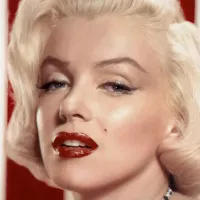
Marilyn Monroe was an iconic American actress and model who...
Saturday Night Live SNL is a late-night live sketch comedy...
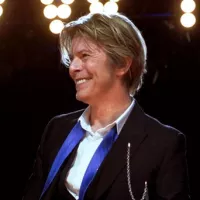
David Bowie David Robert Jones was a highly influential English...

Conan O'Brien is a prominent American television personality renowned for...
Trending

Simon Cowell is a prominent English television personality and businessman recognized for his role as a judge on various talent...

7 months ago Gary Payton Reflects on Jordan Matchup and Hypothetical Stats in Today's NBA

11 days ago Spurs Defeat Nuggets in Thrilling Game, Mavericks Face Nuggets

22 days ago Michael Douglas and Catherine Zeta-Jones Celebrate 25 Years of Marriage with Throwbacks
Luke Kornet is an American professional basketball player currently playing for the San Antonio Spurs in the NBA He's a...
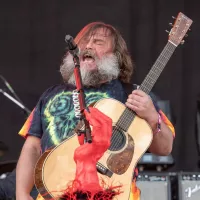
6 months ago Jack Black's Minecraft Movie Sets Premiere on HBO Max, June 20, 2025
Popular

Candace Owens is an American conservative political commentator and author...

Ilhan Omar is an American politician currently serving as the...

XXXTentacion born Jahseh Dwayne Ricardo Onfroy was a controversial yet...

Tom Cotton is an American politician and Army veteran currently...
The Kennedy Center Honors are annual awards recognizing individuals and...

Kelsey Grammer is an accomplished American actor producer and singer...
